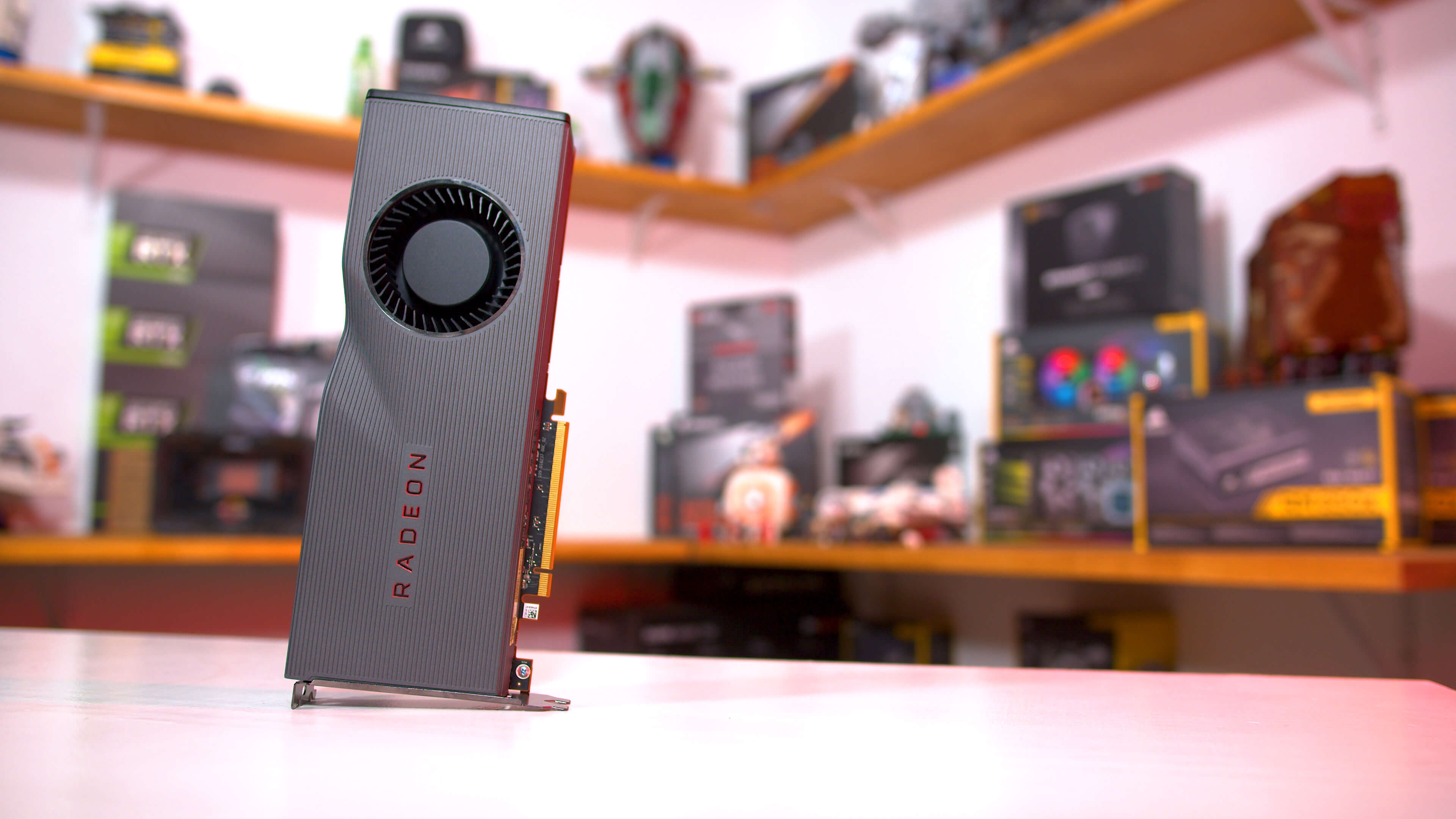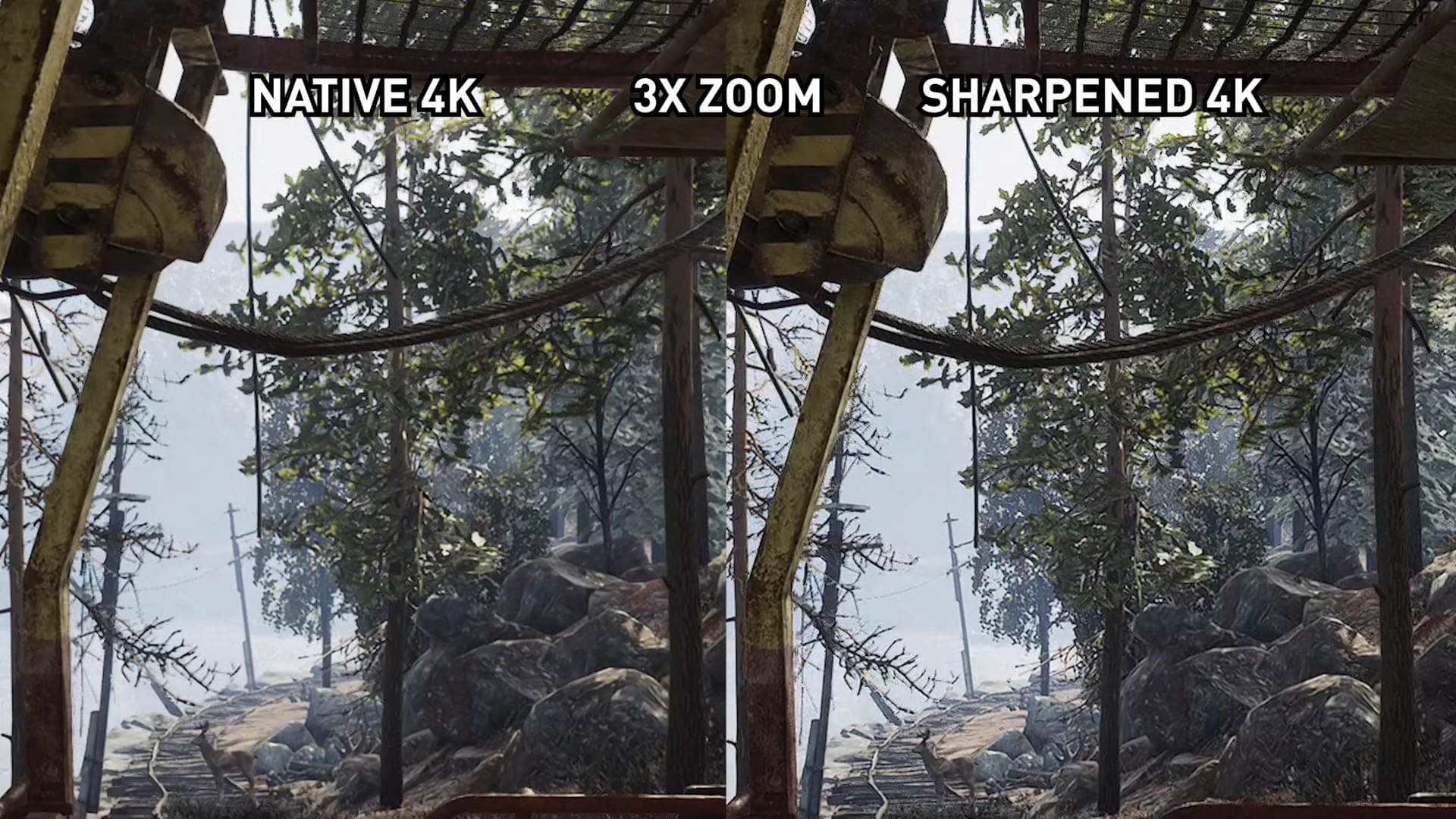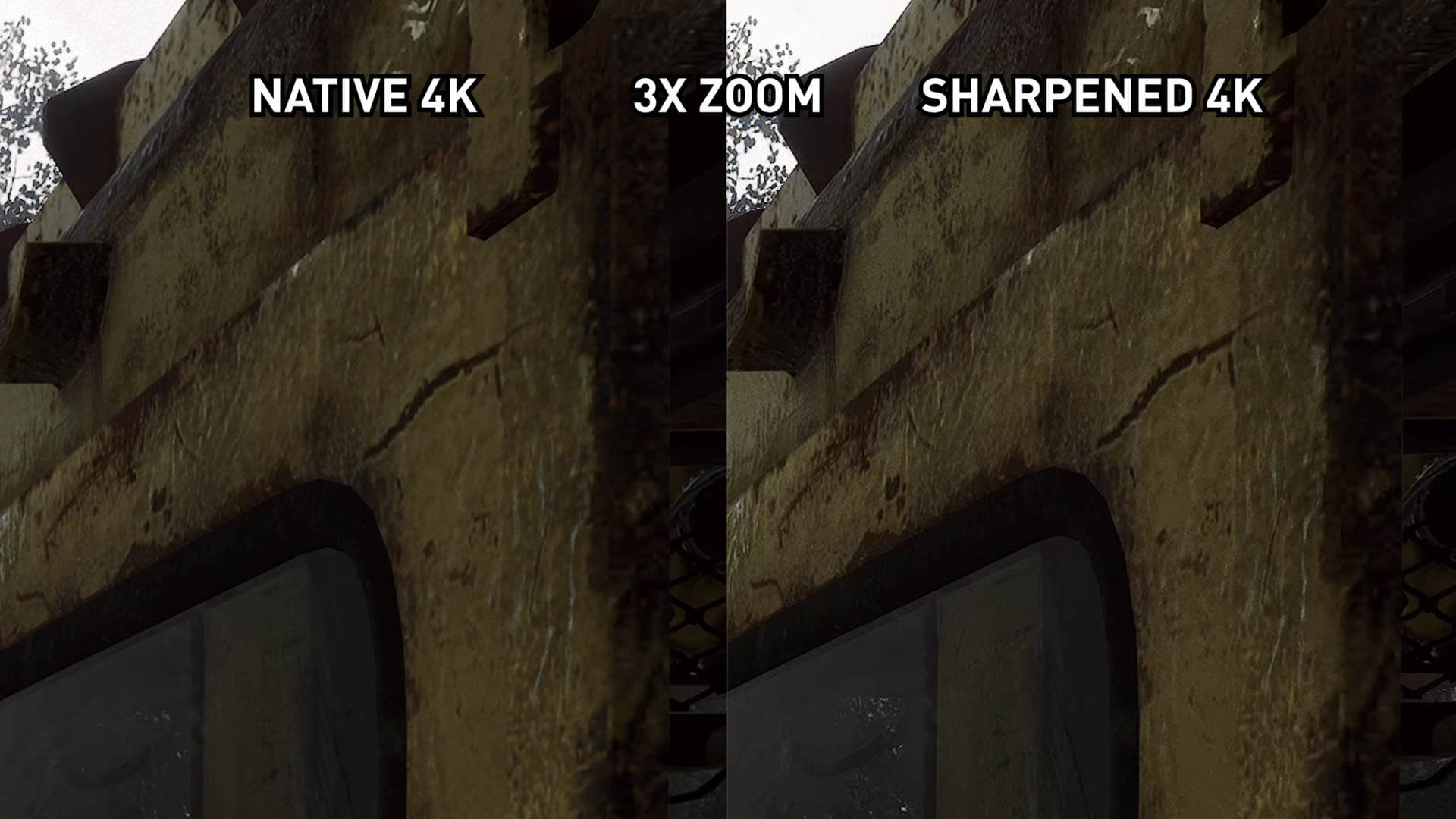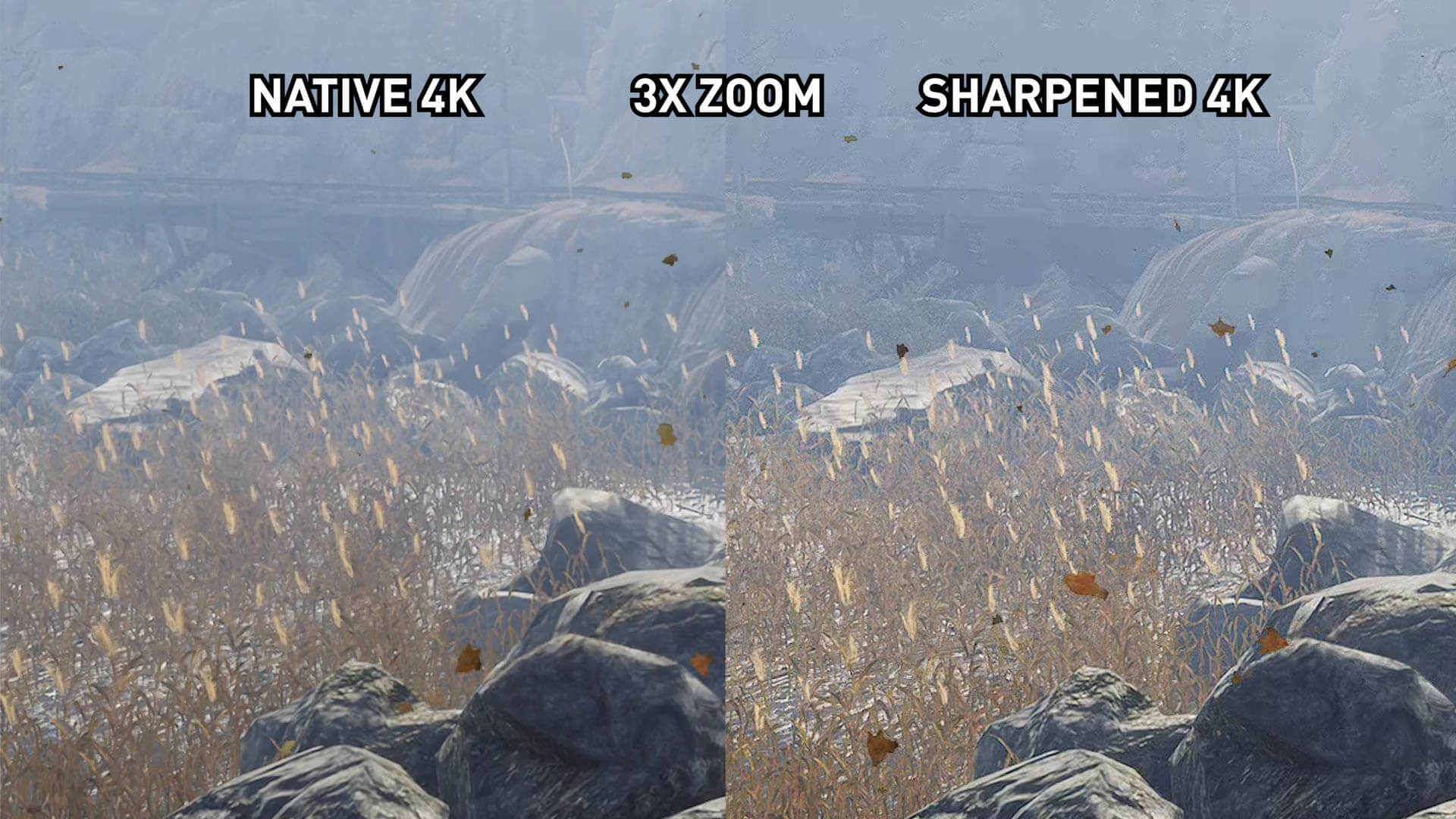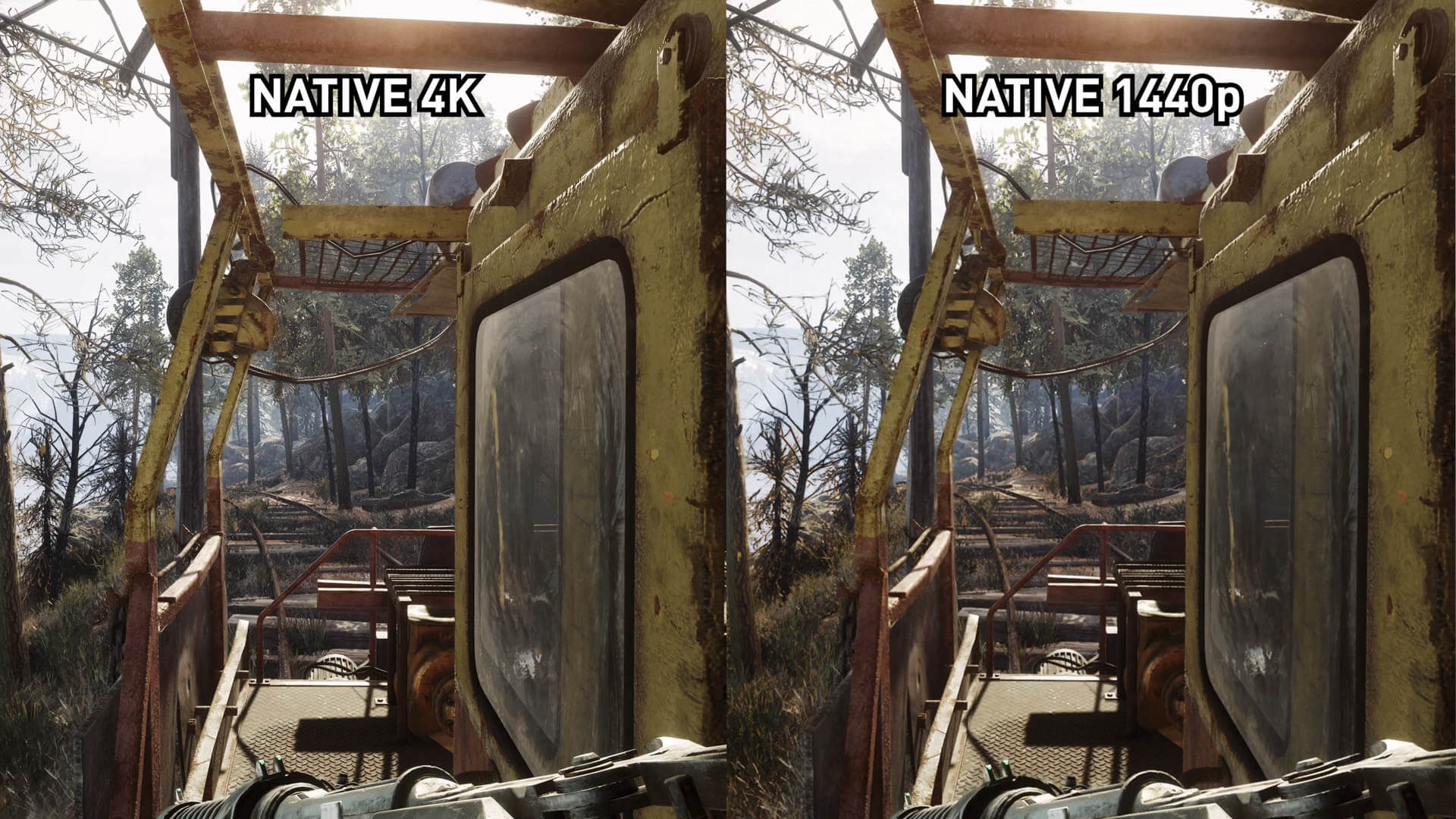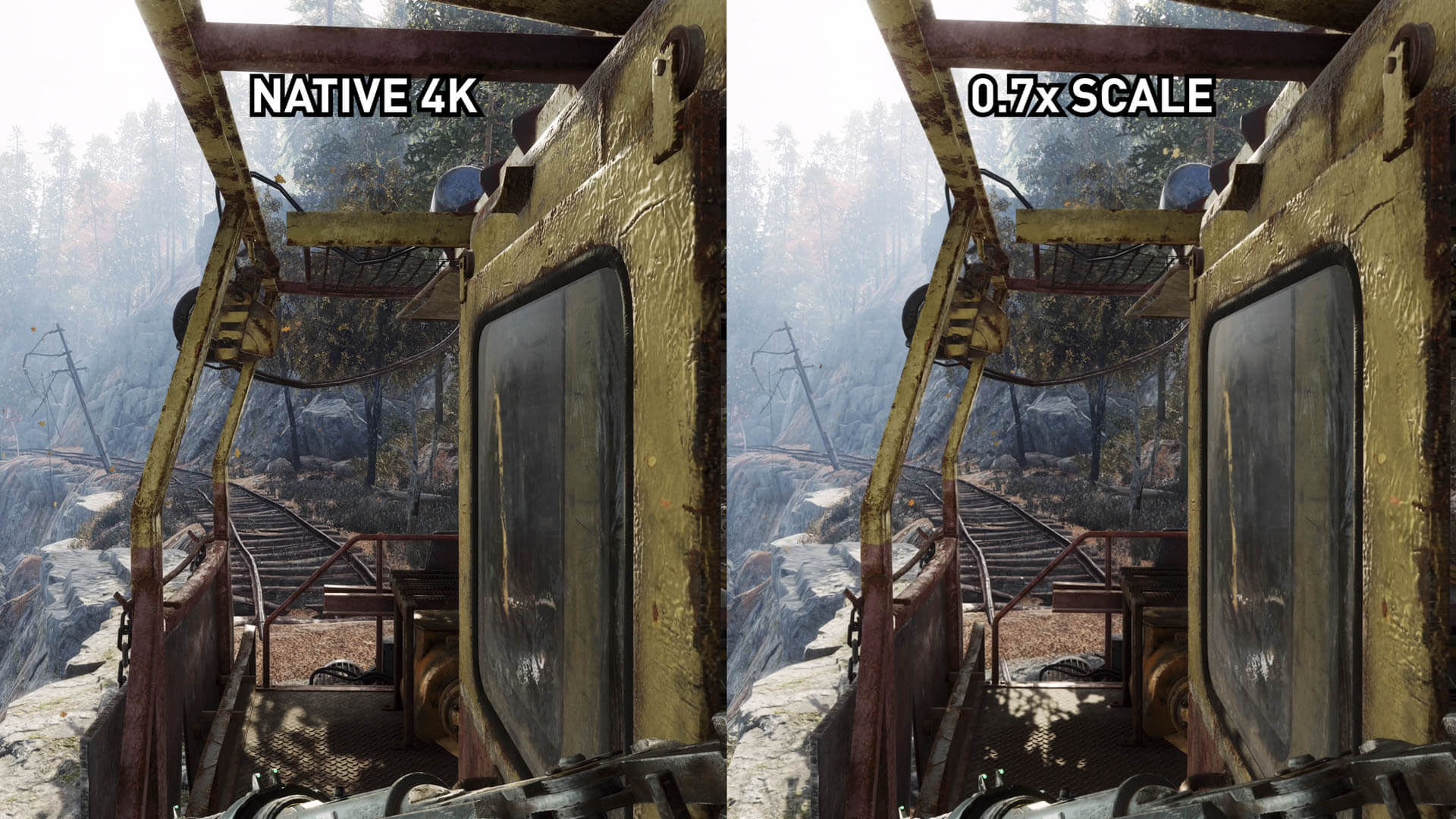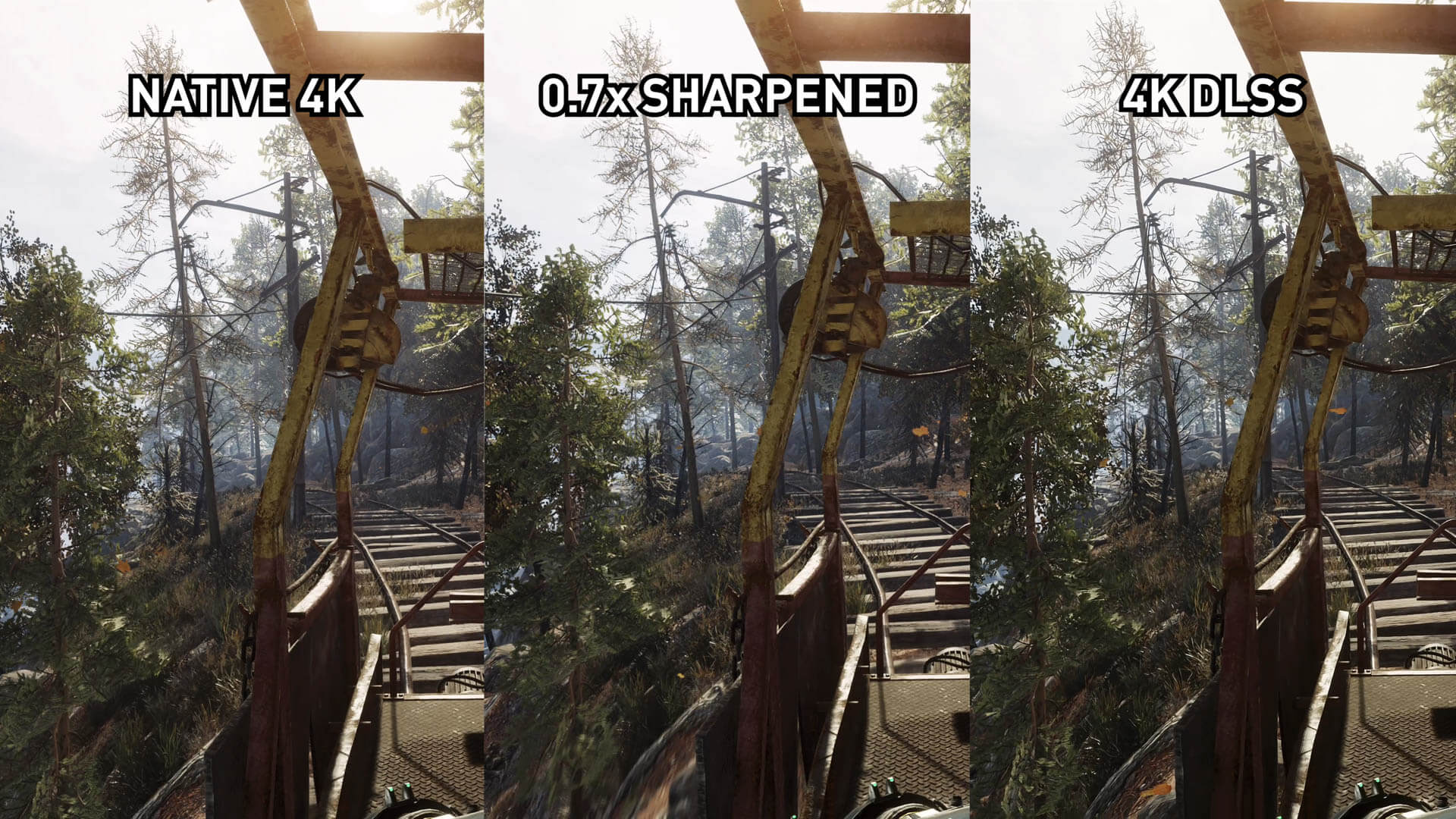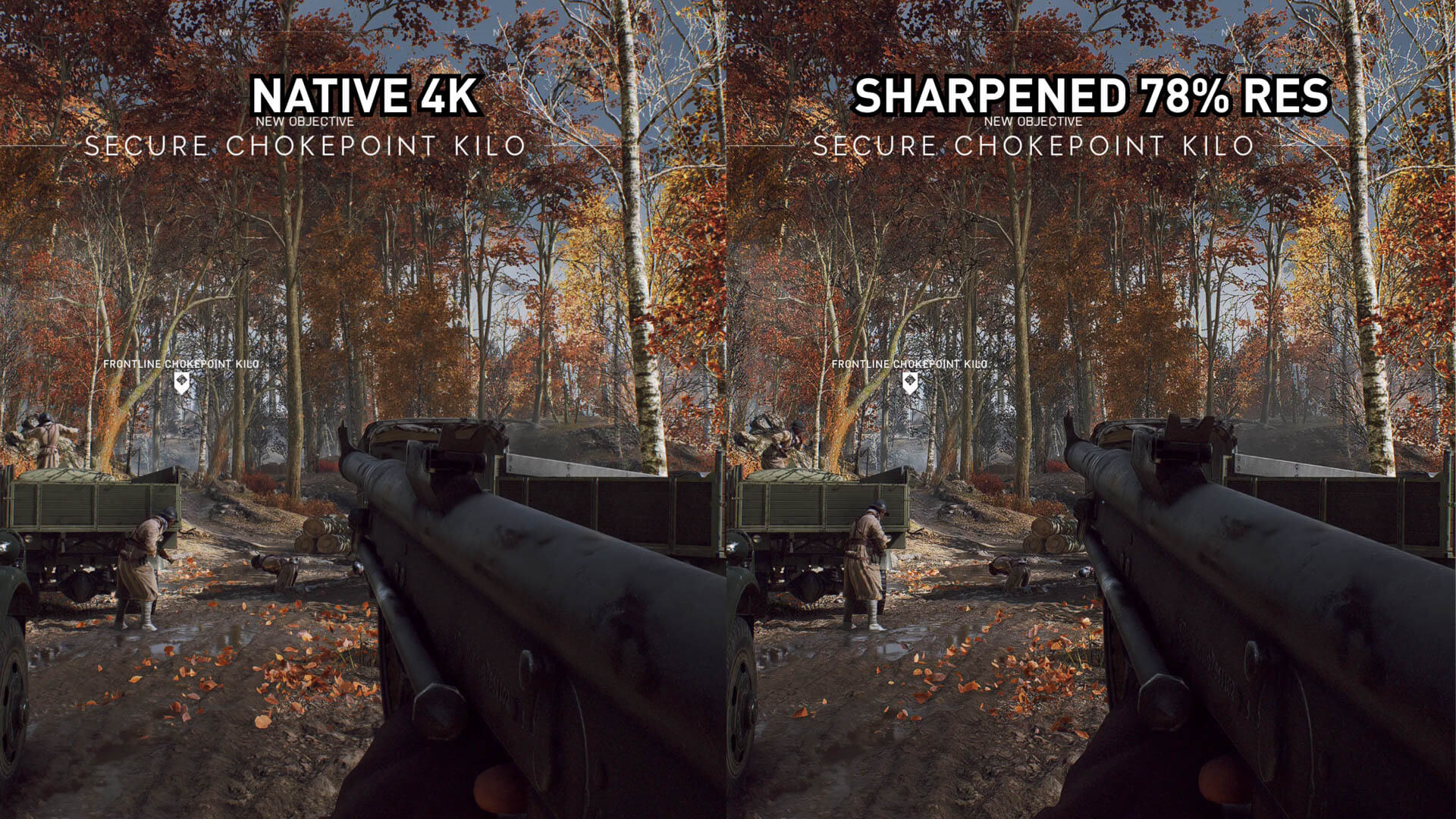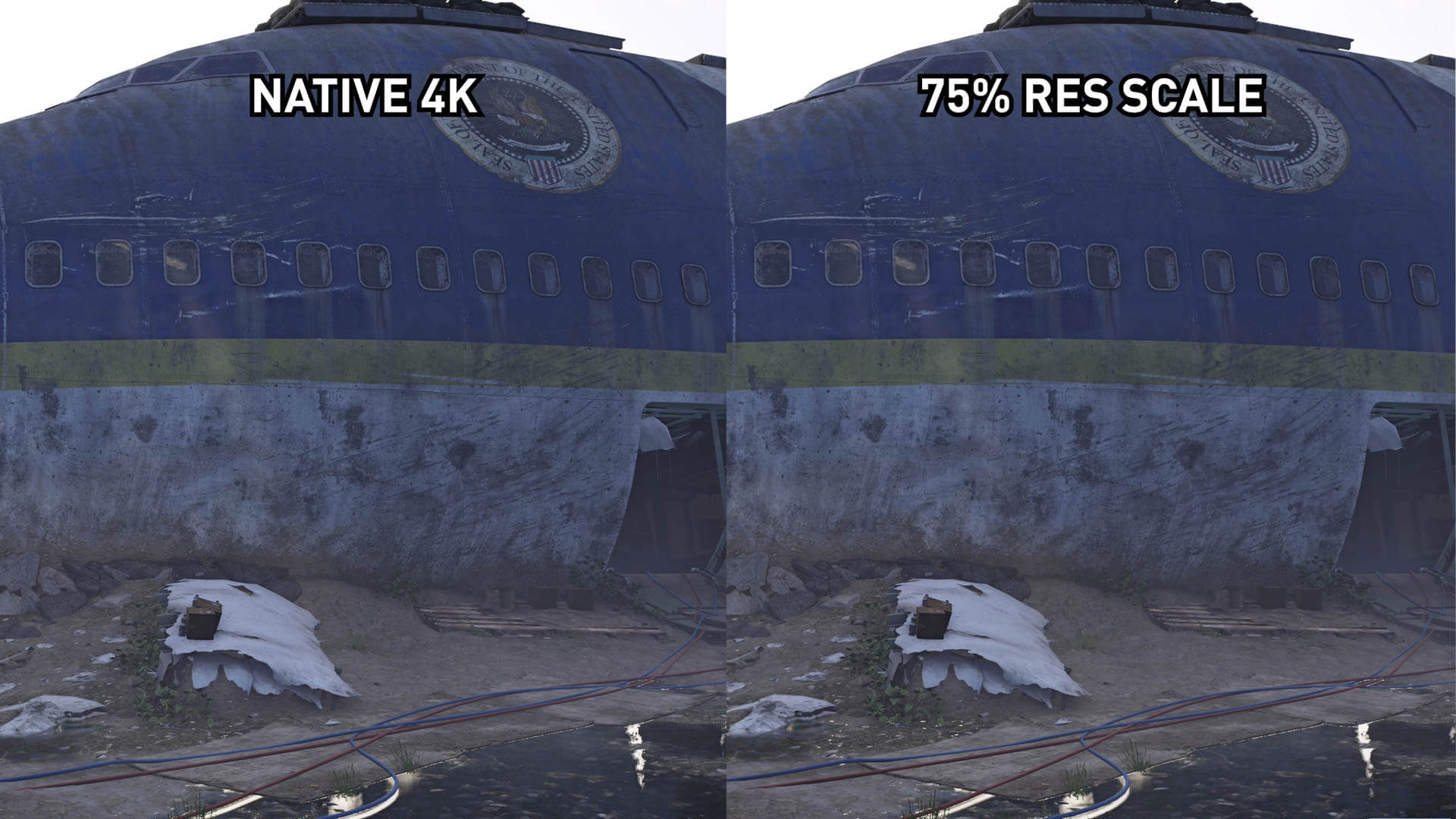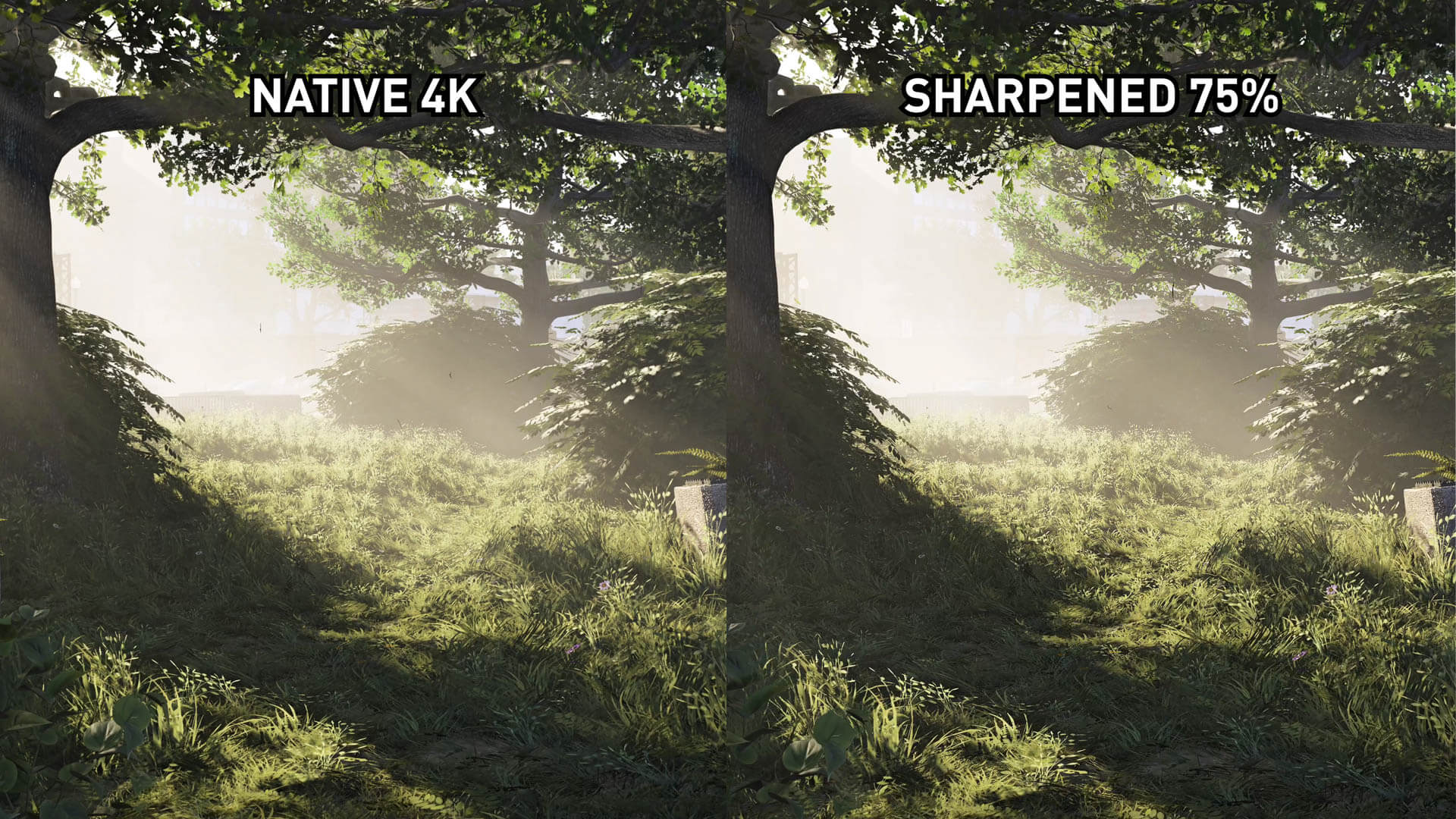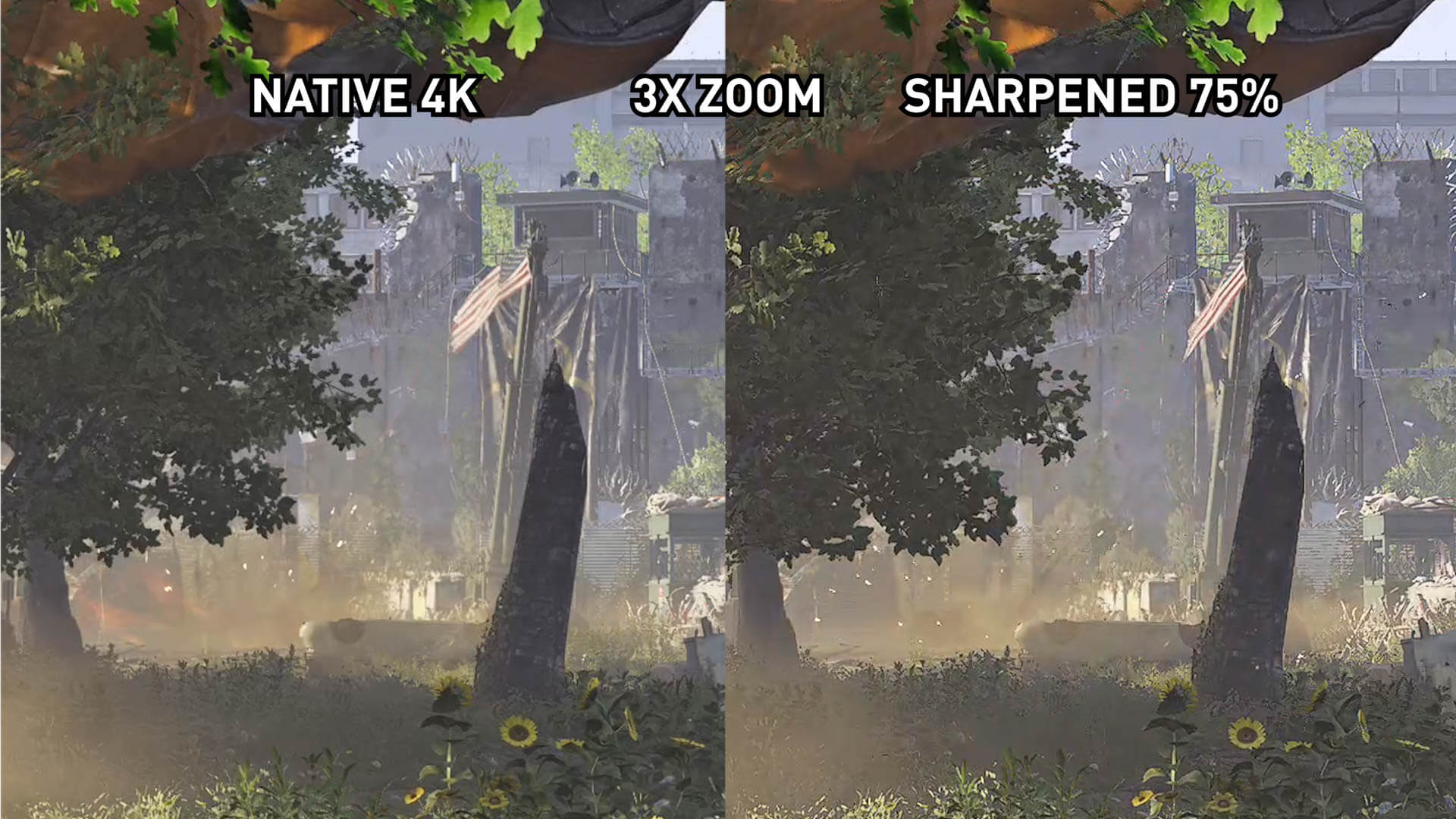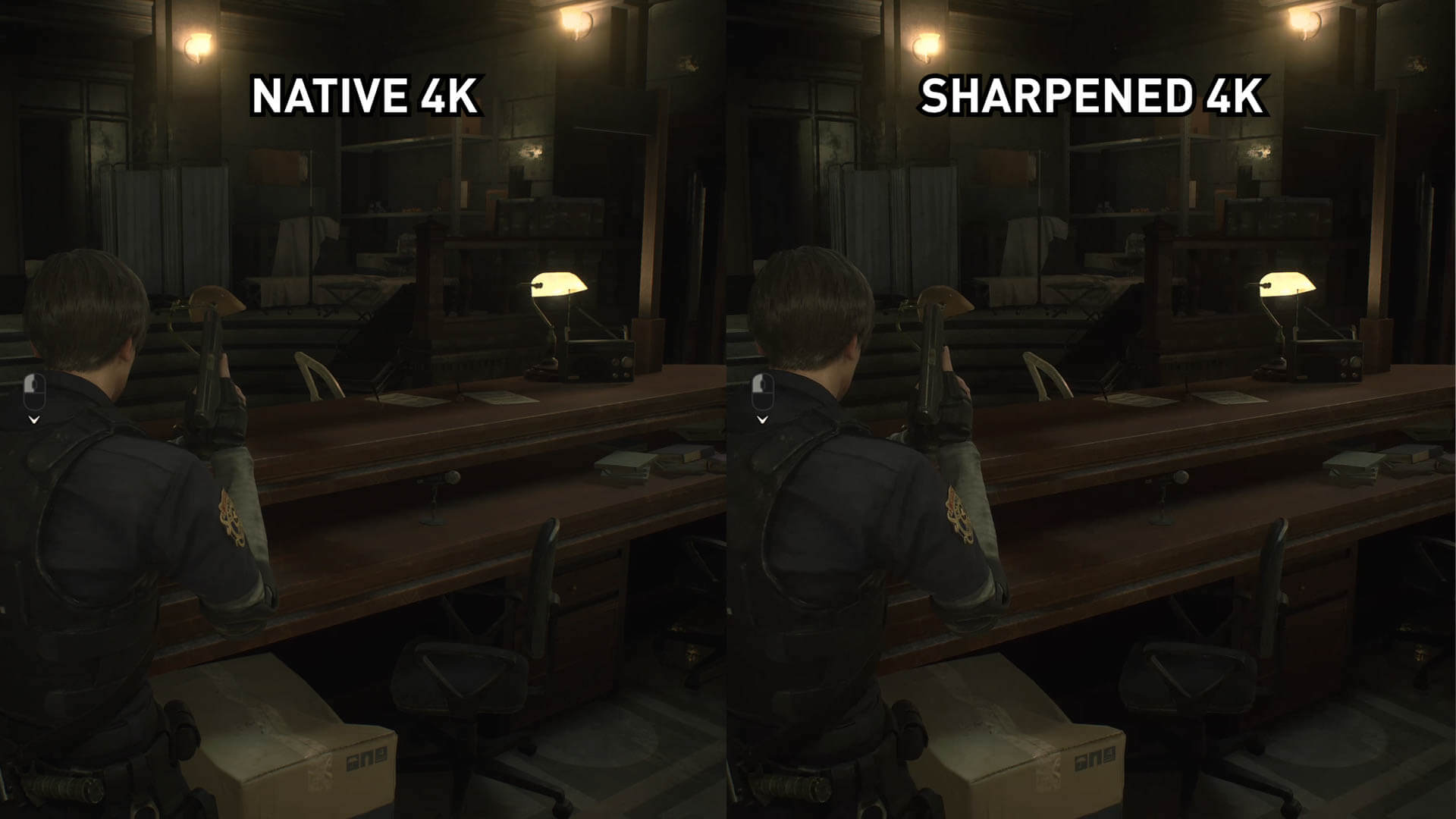Today we're taking a deeper look into one of the new features that shipped with AMD's latest Navi GPUs, the Radeon RX 5700 and RX 5700 XT. You have probably read our review by now and that primarily dealt with performance and overall value, but we didn't go into detail into some of the additional features AMD is providing.
One of those features is Radeon Image Sharpening and there's also have Radeon Anti-Lag – that will be subject to investigation in a future article. Both are interesting technologies, they weren't marketed as must-haves or key selling points for these new GPUs, but just a nice bonus for buyers and we believe anti-lag actually supports older GPUs, too.
So, what is Radeon Image Sharpening? In basic terms, it's a post-processing sharpening feature for games that AMD says carries nearly no performance penalty. In theory you turn it on, overall sharpness is improved in game's visuals and everyone walks away happy. But as we observed with GeForce's DLSS, manufacturer's claims do not always reflect reality.
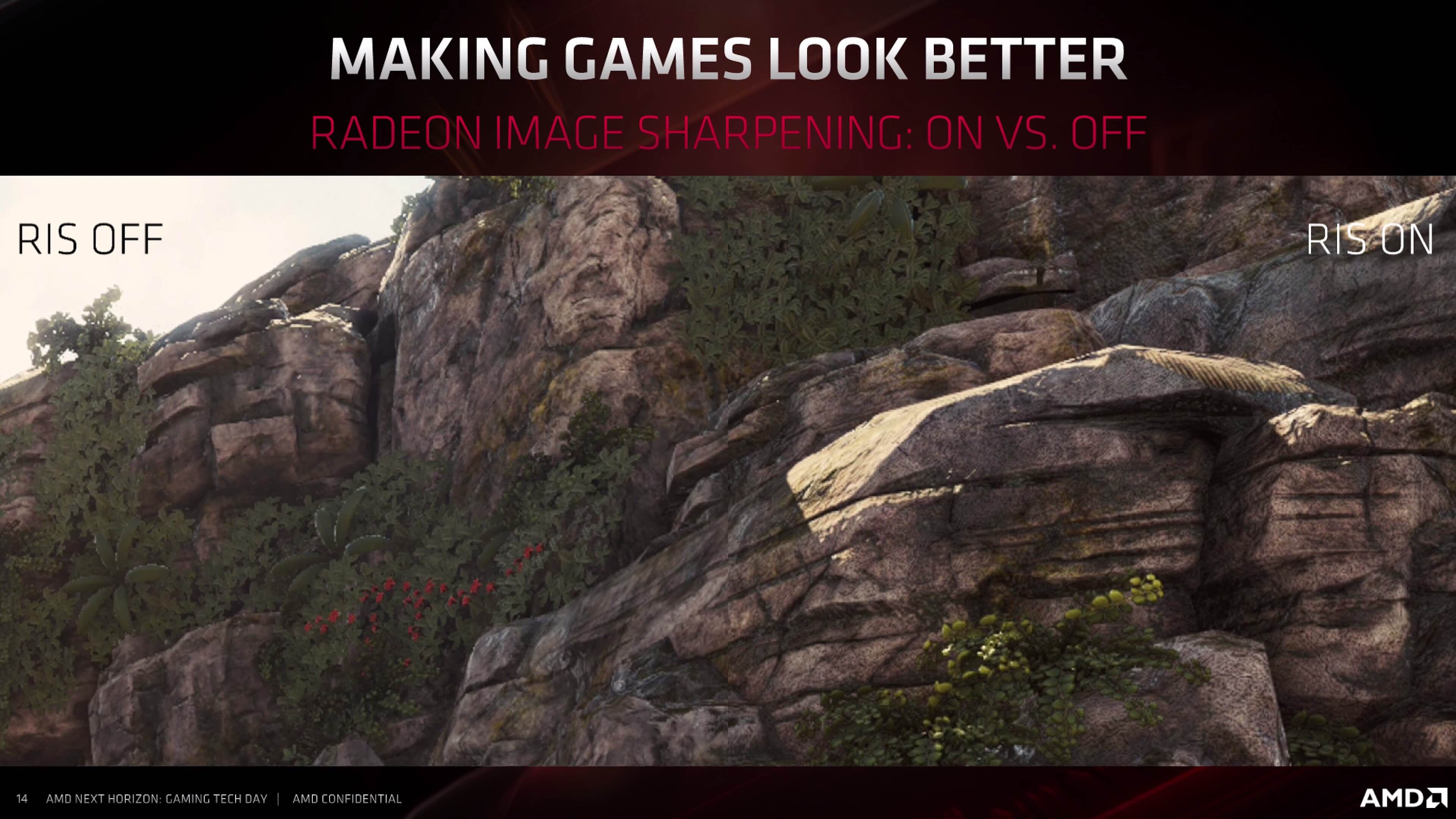
Our take is that there are two key use cases for Image Sharpening: the first is for games that are 'soft' to begin with. Lots of titles these days are using temporal anti-aliasing or TAA, and that can often lead to a blurry presentation. Radeon Image Sharpening (RIS) is a way to sharpen those games and get a crisper image.
The second use case is for resolution downsampling. For example, if you have a 4K display but want better performance, you can run games at 1800p or an 80% resolution scale. This will inevitably make the image softer as it's not being rendered at the native resolution. Radeon Image Sharpening could post process that image, add a bit of sharpness back and get close to the native image for virtually no performance loss. In a sense it's similar to what Nvidia is attempting with DLSS, and we'll compare the two later on.
Radeon Image Sharpening isn't simply a sharpening filter, it uses a contrast adaptive sharpening or CAS algorithm that AMD recently introduced in their FidelityFX suite. While game developers can take FidelityFX and implement that in their games as they see fit, Radeon Image Sharpening is a broad effect that doesn't require per-game implementation. It's a simple switch in Radeon Settings.
To dive deeper into what CAS does, we'll quote AMD directly: "because RIS is based on an algorithm that modulates the degree of sharpening depending on contrast, it clarifies interior object details while leaving high-contrast edges largely untouched." They go on to say this prevents a number of artifacts you get with traditional sharpening.
There is a pretty big catch, though. While Radeon Image Sharpening doesn't require per-game implementation or any developer intervention, it currently only supports DirectX 12, Vulkan and DirectX 9 games. Crucially, this means DirectX 11 titles are not supported.
AMD told us they decided to focus on newer APIs, while DirectX 9 was included because it was easy to do. AMD recognizes that DX11 is the next step and they'll consider adding that in a future software update if there's "demand from the community for that feature." Hopefully they do, because even today there are tons of games that either only support DX11, or perform better on DX11 while supporting DX12.
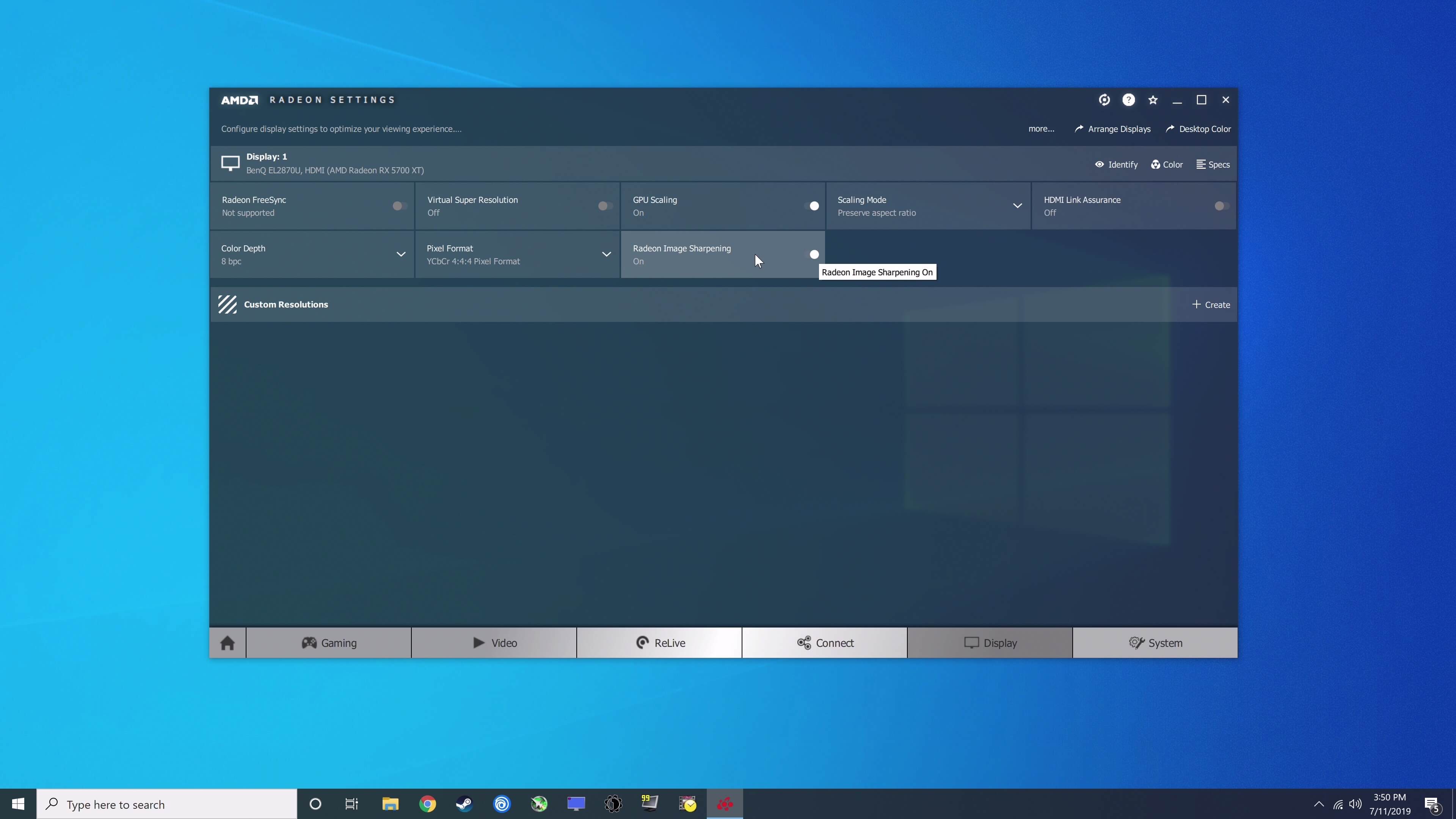
Enabling Radeon Image Sharpening is straightforward. Install the latest drivers, head over to the Display section, and enable both GPU scaling and Radeon Image Sharpening. The feature is only available on new Navi GPUs (5700 and 5700 XT), there is no support for Vega or previous generations as RIS relies on the hardware to deliver CAS with next to no performance loss.
We should also mention RIS is being treated as a global setting right now. You cannot set RIS to be enabled in certain games only using the game profile section of Radeon Settings. That's something AMD should look into, because gamers might not want the feature enabled in every game they play. You also need to restart the game between turning RIS on and off, if you alt-tab out for a quick change it won't work. Just something to keep in mind.
Image Quality
For visual quality comparisons we're going to spend most of our time looking at Metro Exodus. It's a DX12 title that also offers DLSS support for Nvidia cards (DLSS does require games to support the feature), plus it offers highly detailed environments. In addition to the image quality shots offered here you can check out Hardware Unboxed's video (embedded below) using YouTube's 4K quality for the best possible representation of the game's graphics. For all screenshots, you can click on them to see a larger 4K version of the same image.
RIS vs native 4K
Starting by comparing the difference between RIS on and off at native 4K. Metro isn't the sharpest game going around at native resolutions, it's a tad soft and there are no anti-aliasing in the game, but there's certainly still a lot of detail in the native 4K presentation.
The sharpened image is indeed noticeably sharper and cleans up that little bit of softness in the original image. It's particularly effective on foliage, it cleans up the grass and trees in this run which are the softest element of the native image. On close textures it has a minor effect and slightly improves what is already a crisp texture. The CAS algorithm also seems to do a good job of ignoring things that you wouldn't want sharpened, like motion blur or depth of field effects, and while it's not perfect at ignoring those elements in motion, it's hard to spot any issues.
With that said, there are some flaws that shouldn't be ignored. Overall, the sharpened image is brighter; in this scene if I zoom in on the thin foliage, it's quite brighter when sharpened. Same goes for the train tracks and some other areas. It's probably not something you'd notice if it weren't for this side-by-side, but it does seem to be an artifact of the filter.
There are also some elements that the CAS algorithm simply doesn't know to ignore; it doesn't truly know which elements should be sharp and which shouldn't. For example when near the water here, Metro Exodus does have some screen space reflection artifacts. They are more noticeable with RIS enabled, as the artifacts are getting sharpened to be more visible. A minor issue, but something we spotted.
Overall though it would appear RIS does a good job here and generally looks 'better' than the original presentation even if it's faked. When you stop and examine the flaws at times we felt it was too sharp, perhaps unrealistically sharp, but during actual gameplay in motion we didn't see this as an issue.
RIS on downsampled 1440p and 1800p output
Time to look at some results when downsampling. We'll start with 1440p vs 4K and right away the 1440p native image is much softer and looks blurry when upscaled to 4K. Not an ideal way to play on a high-resolution display.
The sharpened 1440p image is a big improvement over native 1440p, but ultimately just doesn't have the same level of detail as the native 4K image. Nearby textures get pretty close, but with some of the fine foliage detail and other small elements, there simply aren't enough pixels and native detail in the 1440p image to simulate a 4K presentation through a post-processing filter.
However we see different results when downsampling in the 1800p range. In Metro Exodus we set a 0.7x shader scale which is roughly equivalent to 1800p. Without sharpening the 1800p image is obviously softer than native 4K. It's not as bad as 1440p, but you're still getting a loss of clarity and fine detail compared to running at a native resolution.
We turned on sharpening for the 1800p image and... wow. We were seriously impressed with the results here. It's not a perfect recreation of 4K and still suffers from some of the general issues with post process sharpening, but in many scenes it's incredibly close and virtually indistinguishable from the native image. True 4K has finer detail in foliage and other small elements, but you'd be hard pressed to spot a difference, especially without a side by side comparison.
RIS vs DLSS
Before we move on to look at performance, let's throw up some DLSS footage captured using an RTX 2070. At 4K with DLSS enabled, the image is being upscaled from 1440p through Nvidia's deep learning algorithms. DLSS in Metro is the best implementation we've seen and it's much better than using Radeon Image Sharpening on a 1440p image, but it's not as good as AMD's sharpened 1800p.
In the best cases, DLSS is as good as sharpened 1800p for large elements and close textures. But DLSS still suffers from the 'oil painting' effect we mentioned in our initial investigation, which looks bad in some environments, and suffers from detail loss especially for rocks and foliage. The way it 'thickens' really fine details like tree branches or wires also degrades the DLSS image in our opinion. Overall, sharpened 1800p gets a lot closer to native 4K than DLSS, at least in Metro.
Performance
Across the three conditions we tested within Metro, we saw performance drop by a mere 1 to 2 percent with Radeon Image Sharpening enabled. That's a negligible 1-2 fps difference which means you can use the feature at no real performance cost if it improves visuals on your game of choice.
For those targeting sharpened 1800p as a higher performance replacement for 4K, you're looking at around a 27 percent uplift to average framerates in Metro for almost no quality loss.
We'll also throw in DLSS numbers here, obviously from a different GPU so it won't match exactly to the RX 5700 XT's results. In the latest version of Metro Exodus, 4K DLSS still performs around the same mark as the 1800p image. Once again, this reinforces our opinion that a simple sharpening filter can be as good as, or in this case noticeably better than DLSS, for a similar performance uplift. We remember saying this when testing DLSS (see our first take and take two) and despite there being hope that Nvidia would 'train' DLSS to be improve over time, that hasn't eventuated.
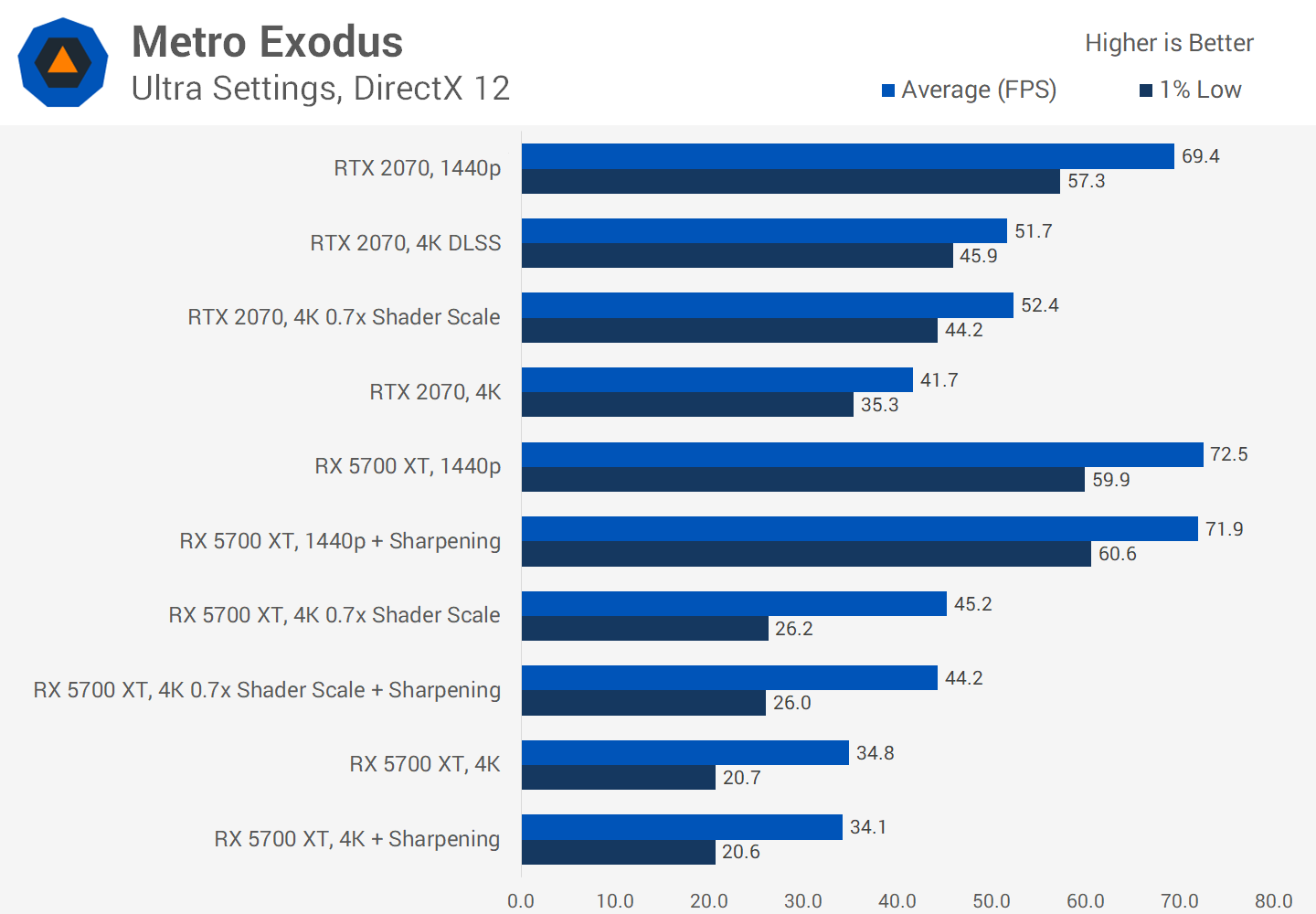
We also checked out Battlefield V and the observations are about the same on this game. Sharpening a native image does look better, BFV is sharper in general than Metro Exodus but still a bit soft from TAA. Much to our surprise, despite keeping film grain enabled for this test, the sharpening filter didn't make the grain more noticeable which can often be a side effect of grain.
For resolution downsampling we focused on a 78% resolution scale which is around 1700p, because this matches the performance uplift of DLSS in this title. Battlefield V handles upscaling really well and actually looks only slightly worse at a 78% scale versus native 4K in this scene; it's a bit softer, a bit less detailed but overall, not bad. This makes it a perfect candidate for sharpening, and indeed using RIS the image is, in fact, sharper than native 4K despite coming from a lower resolution base. Impressive.
Throw DLSS into the mix and it looks significantly worse than the sharpened 1700p image. Battlefield V still has a weak DLSS implementation and can't hold up to the basic sharpening filter. In fact, even the native 1700p image is better in our opinion, so this title shows the weakness of DLSS.
Sharpening isn't quite as effective with this foliage dense scene from Battlefield V but it does a decent job of getting close enough to the native 4K image. Of course, that small visual quality loss comes with upwards of 30 percent performance uplift.
Across all the games we tested Radeon Image Sharpening resulted in a 1-2% performance drop, no need to chart every game.
Another game we tested that doesn't support DLSS but can be used with Radeon Image Sharpening is the Division 2. This title plays nicely with resolution downsampling, its post-processing is phenomenal and you can often run the game at a 75% resolution scale with little loss of quality at 4K.
This game is a good candidate for Radeon Image Sharpening. At a 75% scale with sharpening, the image was often crisper than native 4K, although there were times where jagged edges were more present in the downsampled image, or for distant foliage, you get a few branches with the native 4K image that you don't get with a 75% scale. Still, considering the 75% sharpened output was often 35% faster than native 4K, that's a huge win in general.
Testing Resident Evil 2, we knew this game has notoriously bad temporal anti-aliasing which leads to a soft, often blurry presentation. Using RIS on the native 4K presentation basically fixed the soft image quality without introducing the jagged edges or shimmering you get with the game's SMAA implementation. This is another great, low cost use case for RIS that is worth considering.
Bottom Line
Radeon Image Sharpening is genuinely impressive. It doesn't require any developer implementation and it works well by sharpening the image which can be useful in a variety of situations.
After spending more time with the feature, we feel the best use case is for image downsampling with high resolution displays. A sharpened 1800p image was typically as good as a native 4K image in our testing, which means you can happily use this configuration with Navi GPUs to gain ~30% more performance for a minimal quality loss. Downsampling all the way to 1440p didn't deliver as good results, so the sweet spot is around that 70 to 80 percent resolution scale.
RIS is also good for sharpening up games that can are left a little soft after post-process anti-aliasing techniques like TAA. Given basically all games these days use this sort of AA as opposed to more intensive techniques like MSAA or SSAA, combining that with sharpening can deliver an improved image.
It's also clear that Radeon Image Sharpening is a superior equivalent to Nvidia's DLSS, often by a considerable margin. With both techniques performing at the same frame rate, RIS delivered a clearer, sharper image with fewer artifacts. In our previous DLSS analysis we had stated a simple image sharpening filter would probably work better than DLSS with a lower performance cost, and it turns out AMD has proven us right by implementing exactly that.
To be fair to Nvidia, when comparing images from the same base resolution - 1440p - the DLSS upscaled version is superior to AMD's sharpened version. But the key here is the performance cost when enabling DLSS: if that performance cost was zero, DLSS would be awesome; but instead it's a significant drop, and that makes it kinda worthless up against this simpler sharpening implementation.
Plus, Radeon Image Sharpening is vastly more compatible with today's games even with DX11 support missing, the library of supported games is much larger than the small collection for DLSS. It also works at all resolutions, whereas DLSS is restricted to certain resolutions, GPUs, and often quality levels.
Radeon Image Sharpening isn't perfect though. In situations where the image is already sharp at a native resolution, sharpening can lead to an 'artificial' sharpened look, so in those cases it's not worth turning on the feature. It also doesn't get everything right and in some edge cases can sharpen things it shouldn't. But considering this is just faking it for next to no performance cost, it's hard to complain about a few minor inconsistencies.
Our take is RIS delivers what DLSS couldn't: a simple, low performance cost technique that makes resolution downsampling viable. As more gamers get their hands on Navi GPUs, it will be interesting to see how broadly Radeon Image Sharpening is adopted and recommended based on good results.
Shopping Shortcuts:
- AMD Radeon RX 5700 XT on Amazon, Google Express
- AMD Radeon RX 5700 on Amazon, Google Express
- GeForce RTX 2070 Super on Amazon, Google Express
- GeForce RTX 2060 Super on Amazon, Google Express
- GeForce GTX 1660 Ti on Amazon, Google Express
- AMD Ryzen 9 3900X on Amazon, Google Express
- AMD Ryzen 7 3700X on Amazon, Google Express
- AMD Ryzen 5 3600X on Amazon, Google Express
- AMD Ryzen 5 2600X on Amazon, Google Express
- Intel Core i5-9400F on Amazon, Google Express
